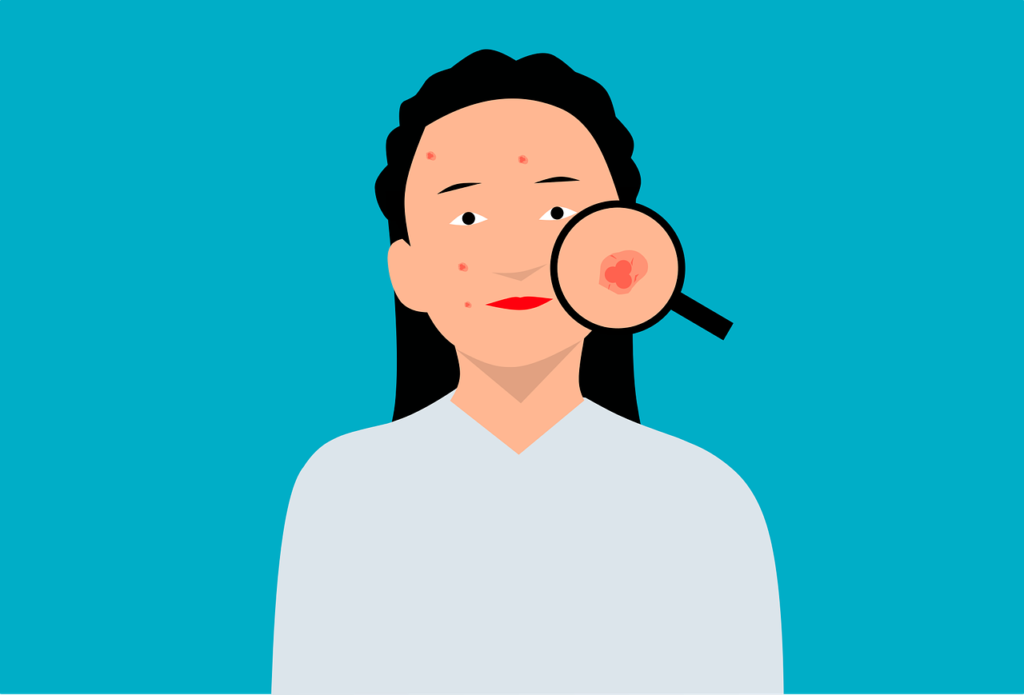Acne: Understanding a Common Skin Condition
What is Acne? Acne is a common skin condition that occurs when hair follicles become clogged with oil (sebum) and dead skin cells, leading to the formation of pimples, blackheads, whiteheads, and inflammation. Acne typically appears on the face, neck, chest, back, and shoulders and can range from mild to severe in severity.
Types of Acne There are several types of acne lesions, including:
- Comedones: Non-inflammatory lesions that occur when hair follicles become blocked with oil and dead skin cells. Comedones can be open (blackheads) or closed (whiteheads).
- Papules: Small, raised bumps that may be red and tender to the touch. Papules occur when hair follicles become inflamed due to bacterial infection.
- Pustules: Similar to papules but filled with pus. Pustules are often red and may have a white or yellow center.
- Nodules: Large, solid, painful lumps beneath the surface of the skin. Nodules form when hair follicles become deeply clogged and inflamed.
- Cysts: Deep, pus-filled lumps that are larger and more severe than nodules. Cysts are the most severe form of acne lesion and can lead to scarring if not treated promptly.
Symptoms of Acne The symptoms of acne may vary depending on the type and severity of the condition. Common symptoms include:
- Pimples or zits
- Blackheads (open comedones)
- Whiteheads (closed comedones)
- Redness and inflammation
- Pain or tenderness
- Itching or irritation
- Scarring (in severe cases)
- Changes in skin texture or tone
Causes of Acne Acne develops when several factors contribute to the blockage and inflammation of hair follicles, including:
- Excess Oil Production: Increased production of sebum (oil) by the sebaceous glands can contribute to the clogging of hair follicles.
- Dead Skin Cells: Accumulation of dead skin cells on the skin’s surface can mix with oil and block hair follicles, leading to acne.
- Bacteria: Propionibacterium acnes (P. acnes) is a type of bacteria that resides in hair follicles and can multiply rapidly, leading to inflammation and acne.
- Hormonal Changes: Fluctuations in hormone levels, particularly during puberty, menstruation, pregnancy, or hormonal disorders, can increase sebum production and contribute to acne development.
- Genetics: A family history of acne may increase the risk of developing the condition, suggesting a genetic predisposition to acne.
Risk Factors for Acne Risk factors for acne may include:
- Age: Acne is most common during adolescence, but it can occur at any age.
- Hormonal Changes: Hormonal fluctuations during puberty, menstruation, pregnancy, or menopause can increase the risk of acne.
- Genetics: A family history of acne may increase the likelihood of developing the condition.
- Certain Medications: Some medications, such as corticosteroids, androgens, or lithium, may increase the risk of acne as a side effect.
Diagnosis of Acne Diagnosing acne typically involves:
- Physical Examination: A dermatologist or healthcare provider will examine the skin to assess the type, severity, and distribution of acne lesions.
- Medical History: A review of the patient’s medical history, including any medications, skincare products, or underlying health conditions that may contribute to acne.
- Grading Scale: Acne severity may be assessed using a grading scale based on the number and type of lesions present, ranging from mild to severe.
Pharmacological Treatment Pharmacological treatment options for acne may include:
- Topical Treatments: Over-the-counter or prescription creams, gels, or lotions containing ingredients such as benzoyl peroxide, salicylic acid, retinoids, or antibiotics may be used to reduce oil production, unclog pores, and decrease inflammation.
- Oral Medications: Oral antibiotics, hormonal therapies (such as birth control pills or spironolactone), or isotretinoin (Accutane) may be prescribed for moderate to severe acne that does not respond to topical treatments.
- Combination Therapies: Combining different medications, such as topical retinoids with oral antibiotics or hormonal therapies, may be more effective for treating acne and preventing recurrence.
Non-Pharmacological Treatment Non-pharmacological treatment options for acne may include:
- Proper Skincare: Gentle cleansing with a mild cleanser and non-comedogenic skincare products can help remove excess oil, dirt, and dead skin cells without irritating the skin.
- Lifestyle Modifications: Adopting healthy lifestyle habits, such as maintaining a balanced diet, staying hydrated, managing stress, and avoiding excessive sun exposure or tanning beds, can help improve overall skin health and reduce the risk of acne.
- Professional Treat




